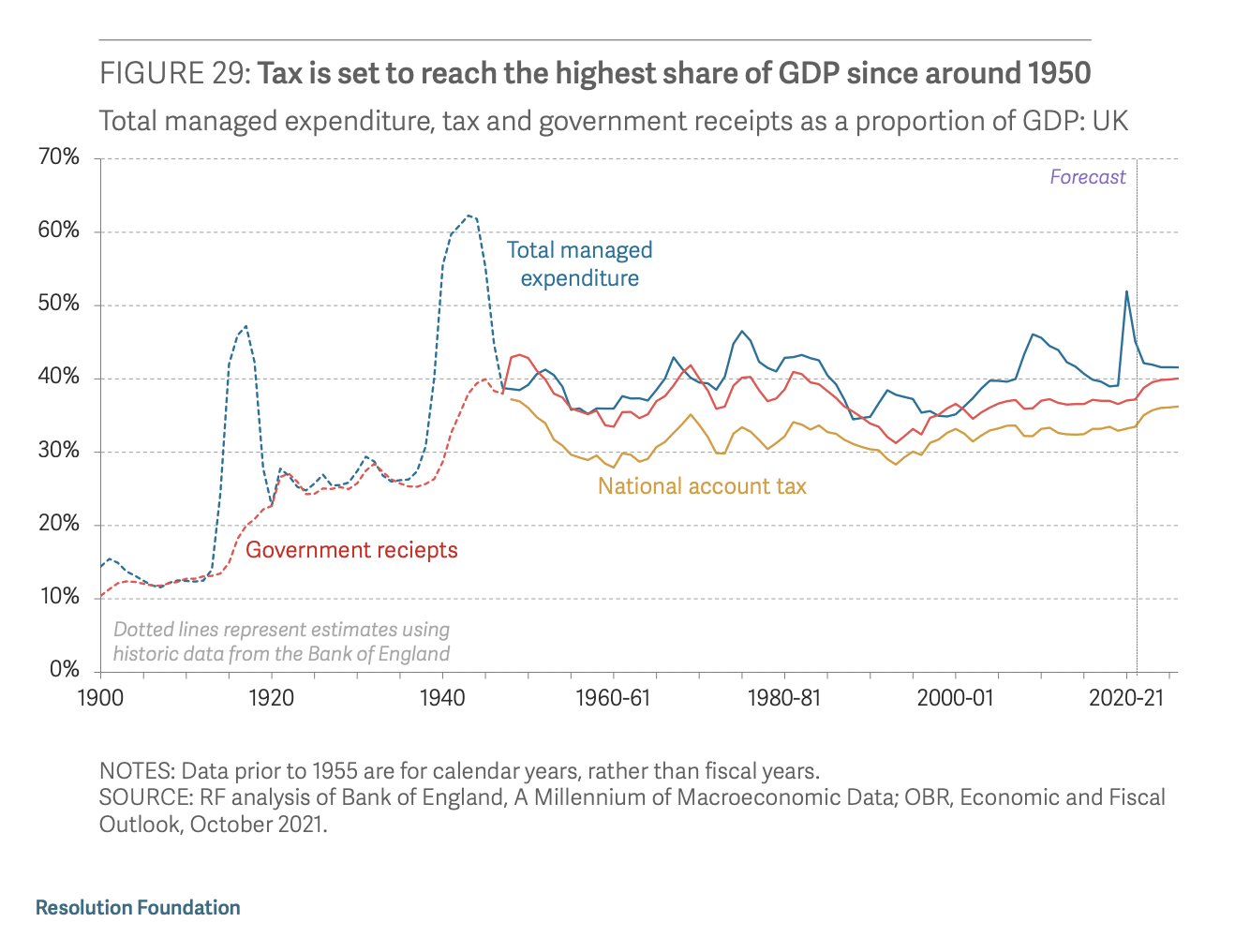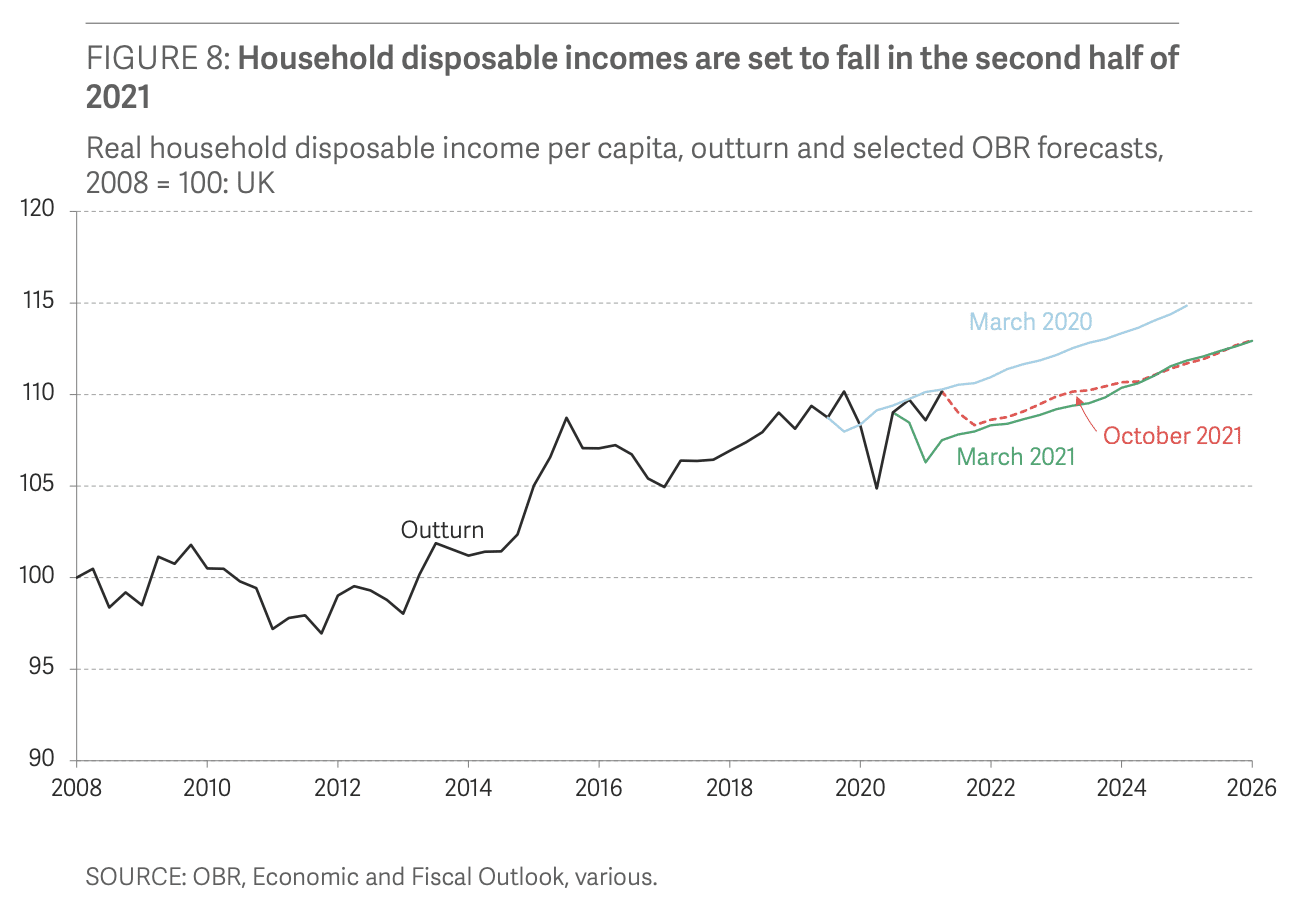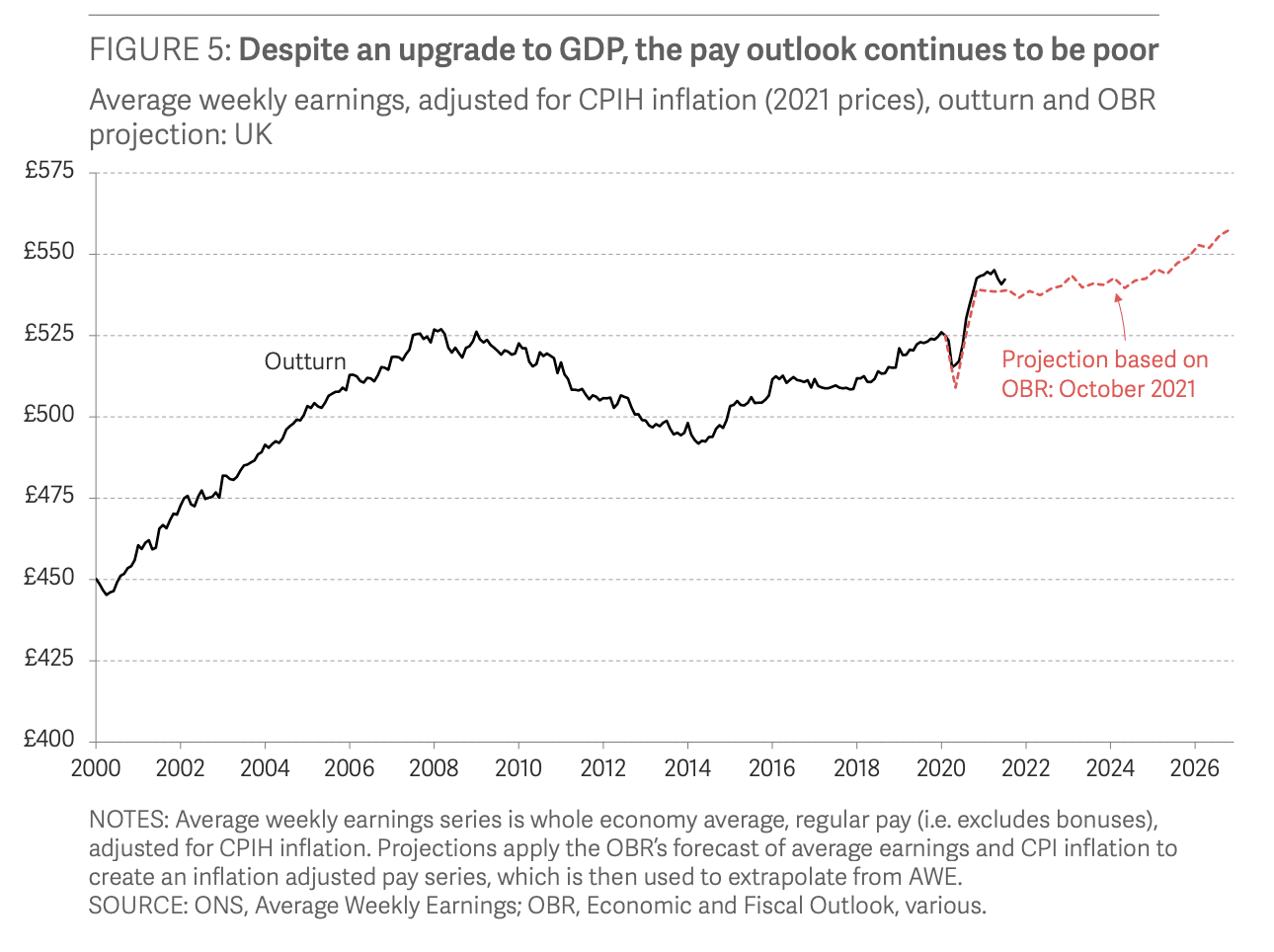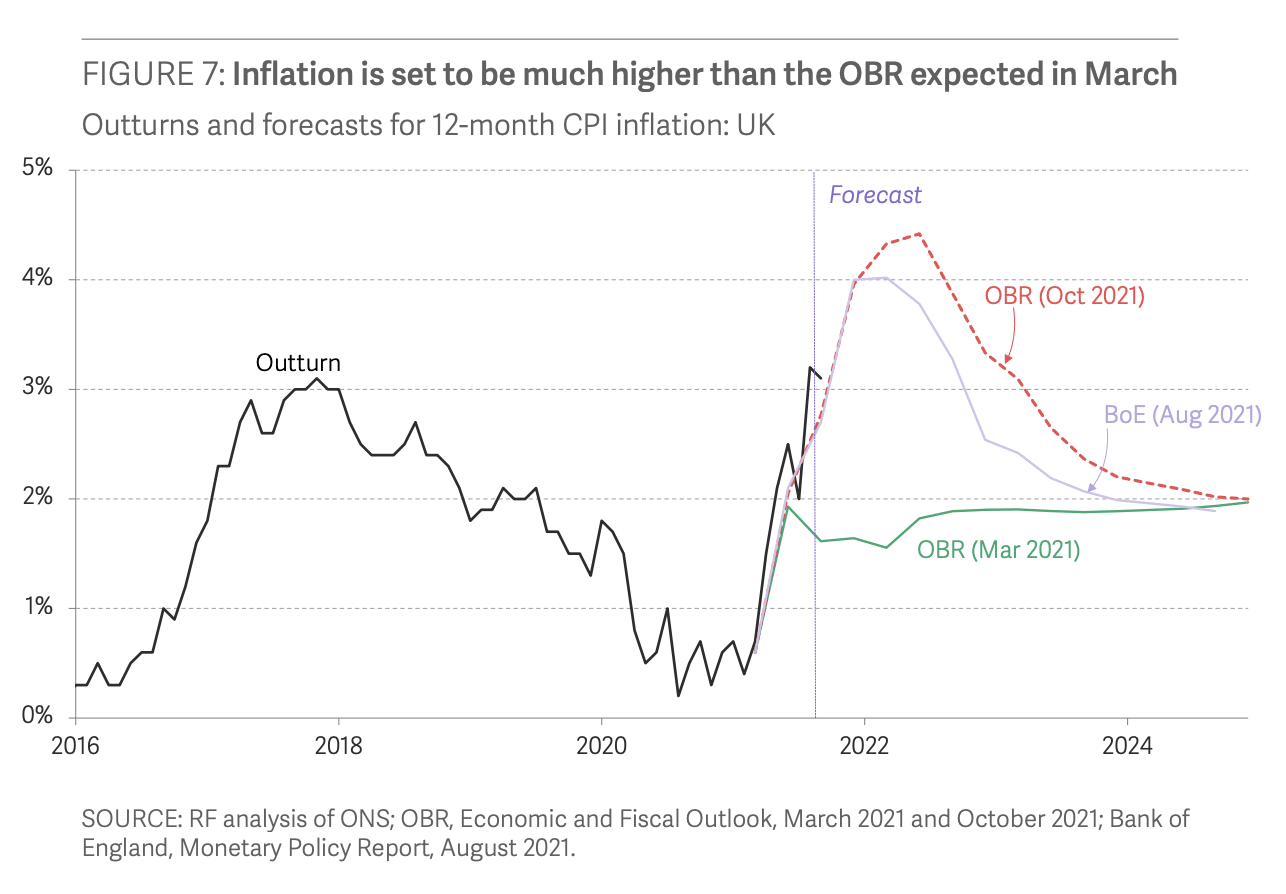Budget 2021 Analysis: Taxes Rising at Fastest Rate Since 1997
Please note that we are not authorised to provide any investment advice. The content on this page is for information purposes only.
Budget 2021 analysis by the Resolution Foundation shows the Autumn Budget and Spending Review will set the Uk’s finances on a path that will increase the tax bill for the average household to £3,000 by 2026-27.
The tax hike means that taxation’s share of GDP will be the highest level since Clement Attlee was prime minister in the early 1950s, at 36.2% (see chart below).
Previously announced Autumn Budget tax increases such as in national insurance that were not mentioned in Chancellor Rishi Sunak’s statement to parliament yesterday, mean that the taxation burden will rise at its fastest one-year rate since 1997-98. It will also be the fastest rate of increase out of a recession since 1981-82.
The tax share of GDP will rise 1.6% in 2022-23. None of that sits very well with Sunak’s insistence that he is a low tax chancellor.

However, the chancellor is caught between the need to be fiscally conservative, as he seeks to bring borrowing under control, while increasing public spending to secure the recovery.
Although spending by 2026 will be lower than the 45.6% of GDP in 2010 at 41.58%, excluding the pandemic spending in 2020 it is the highest level since 2014.
Chief Executive of the Resolution Foundation Torsten Bell said the Budget represented “the end of low tax conservatism.”
Household disposable income to fall -1.7%
But the Budget also represented a hit on household incomes because of the deteriorating inflation outlook, according to Resolution.
The Office of Budget Responsibility expects household disposable income to have fallen -1.7% in 2021 (see chart below). Incomes will not be back at second quarter 2021 levels until 2023, with household income growth revised lower, down from 1.1% to 0.0%. The longer term income growth outlook is only down 0.1% to 1.3%, so it little changed. However, the OBR says the pandemic crisis will have “a lasting impact” by reducing incomes by -2.6%.

The improved economic outlook presented by the OBR means unemployment is seen at 4.2% in 2022, which means the economy has dodged the sharp rise in unemployment that was previously expected when the furlough arrangements ended in September.
OBR: real wages set to decline in 2022
However, the picture for real wages is not as rosey, even after taking into account the rises announced previously in the national minimum wage. The OBR sees real wages falling next year – although average wages will rise 3.9%, inflation will be 4.0%.
The Resolution Foundation says that low growth in real wages has been baked into the UK economy since the financial crisis of 2008. It points out that in the 16 years before 2008 real wages rose 36% but but in the 16 years following 2008 (in other words up to 2024) real wages will have risen by just 2.4% according to the OBR.
“As a result, decade-on-decade growth in real pay is at its lowest point since the 1930s,” states the Resolution analysis.

Inflation could reach 5% in 2022
The OBR expects inflation to be as high as 4.4% in 2022, more than double its forecast as recently as March. Worryingly, the OBR said that recent data not included in the forecast would be consistent with inflation reaching 5% in 2022.






